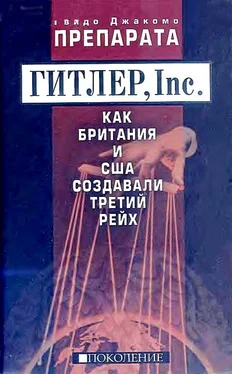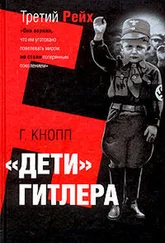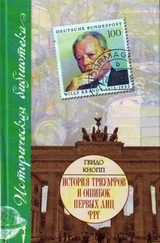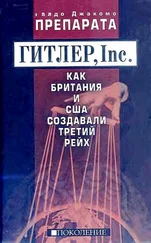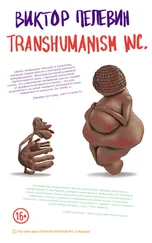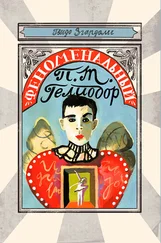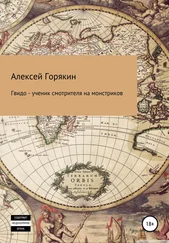59. Stewart, White Armies, pp. 137-8.
60. Kennan, Russia, p. 108.
61. Stewart, White Armies, pp. 135-6.
62. В Сибирь Британия, Франция и Италия отправили 1400, 1400 и 1200 солдат, соответственно, (ibid., р. 226).
63. Jonathan Smele, Civil War in Siberia. The Anti-Bolshevik Government of
Admiral Kolchak, 1918-1920 (Cambridge: Cambridge University Press, 1996), pp. 72, 97-9, 418.
64. Stewart, White Armies, p. 153.
65. Richard Luckett, The White Generals. An Account of tfie White Movement in
Russia and the Russian Civil War (New York: Viking Press, 1971), p. 231.
66. Pipes, Concise History, p. 235.
67. «Не должно быть никаких попыток покорить большевистскую Россию силой оружия… Не надо использовать антибольшевистские армии для реставрации старого царского режима… [и] возложения на крестьян старых феодальных повинностей [!], в условиях которых они владели землёй…» (Lloyd George, quoted in ibid., p. 250).
68. Carroll Quigley, Tragedy and Hope. A History of the World in Our Time (New
York: Macmillan Company, 1966), p. 261.
69. Наибольших успехов в борьбе с Советами Белое движение добилось в сентябре 1919 года.
70. Stewart, White Armies, p. 166.
71. Pipes, Concise History, p. 252.
72. Leon Degrelle, Hitler: Born at Versailles (Cosla Mesa; Institute lor
Historical Review, 1987), p. 430.
73. Stewart, White Armies, p. 173.
74. Luckett, White Generals, p. 257.
75. Stewart, White Armies, p. 162.
76. Gordon-Levin, Woodrow Wilson, p. 224.
77. Geminello Alvi, DeVestremo occidente. II secoh americano in Europa. Storie
economiche (Firenze: Marco Nardi Editore, 1993), p. 158.
78. Smele, Civil War, pp. 419-20.
79. Luckett, White Generals, p. 226.
80. Stewart, White Armies, p. 296.
81. Ibid., p. 286.
82. Ibid., p. 314.
83. Smele, Civil War, p. 201.'
84. Niall Ferguson, The Pity of War (New York: Basic Books, 1999), p. 337.
85. Margaret Macmillan, Paris 1919. Six Months that Changed the World (New York: Random House, 2002), p. 222.
86. Stewart, White Armies, p. 243.
87. Forzoni, Rublo, p. 342.
88. Fleming, Kolchak, p. 71.
89. Как это, например, делал Анвар Садат, заместитель Насера, позже ставший президентом Египта, говоря так об СССР всякий раз, когда в геополитическом анализе упоминали мнимую враждебность России (John К. Cooley, Unholy Wars. Afghanistan, America and International Terrorism (London: Pluto Press, 2000), p. 33).
90. Gordon-Levin, Woodmw Wilson, p. 231.
91. Ibid., p. 230.
92. Pipes, Concise Histoiy, p. 250.
93. Ibid., p. 270.
94. Ibid., p. 250.
95. R. H. Bruce Lockart, British Agent (London: G. P. Putnam & Sons,
1933), p. 222.
96. Anthony Sutton, Wall Street and the Bolshevik Revolution (New Rochelle,
NY: Arlington House Publishers, 1981), p. 158.
97. Edward Jay Epstein, Dossier: The Secret Story of Armand Hammer (New
York: Random House, 1996), pp. 45-85.
98. Giovanni Preziosi, Giudaismo, bolscevismo, plutocrazia e massoneria
(Torino: Ainoldo Mondadori, 1941), p. 127.
99. Kennan, Russia, p. 113.
100. Ibid., pp. 117-18.
101. John Maynard Keynes, The Economic Consequences of the Peace (New
York: Penguin Books, 1995 [19201), p. 153.
102. Ibid., p. 165.
103. Macmillan, Paris 1919, p. 181.
104. Ibid., p. 192.
105. Charles L. Mee Jr., The End of Order, Versailles 1919 (New York:
E. P. Dutton, 1980), pp. 209-210.
106. Quigley, Tragedy, p. 272.
107. Ibid.
108. Macmillan, Paris 1919, p. 466.
109. Ibid., p. 472.
110. Epstein, Erzberger, p. 323.
111. Quigley, Tragedy, p. 277.
112. Bernhard von Billow, Ij> memorie del Principe di Billow. Volume HI 1901-
1920 (Milano: Ainoldo Mondadori, 1931), p. 322.
113. Один миллион немцев остался в Польше, три миллиона в Чехо-
словакии, по полмиллиона в Венгрии и Югославии и 700 тысяч
в Румынии (Quigley, Tragedy, p. 280).
114. Hans Mommsen, The Rise & Fall of the Weimar Democracy (Chapel Hill:
University of North Carolina Press, 1989), p. 110.
115. Mee, End of Order, p. 222.
116. Keynes, Economic Consequences, p. 146.
117. Erich Eyck, Storia delta repubblica di Weimar, 1918-1933 (Geschichte der
weimarer Republik) (Torino: Giulio Einaudi Editore, 1966 [1956]), p. 131.
118. Keynes, Economic Consequences, p. 200.
119. Mee, End of Order, p. 256.
120. Keynes, Economic Consequences, pp. 289-90, 294.
121. Ibid., pp. 296-7.
122. AM, Occidente, p. 141.
123. Keynes, Economic Consequences, pp. 269.
124. Graham Hutton, Is it Peace? (New York: Macmillan Company, 1937),
pp. 73-4.
125. Hamilton Armstrong, Peace and Counterpeace. From Wilson to Hitler (New
York: Harper & Row Publishers, 1971), p. 98.
126. Thorstein Veblen, Imperial Germany and the Industrial Revolution
(London: Macmillan 8c Co., 1915), p. 69.
127. E. W. Jorgensen and H. I. Jorgensen, Thorstein Veblen. Victorian
Firebrand (Armonk, NY: M. E. Sharpe, 1999), p. 149.
128. Thorstein Veblen, The Nature of Peace and the Terms of its Perpetuation
(New Brunswick: Transaction Books, 1998 [1917]) p. 277.
129. Veblen, Imperial Germany, pp. 54-5.
130. Ibid., p. 58, emphasis added.
131. Jorgensen and Jorgensen, Thorstein Veblen, p. 150.
132. Veblen, Nature of Peace, p. 142.
133. Ibid., p. 150.
134. Ibid., p. 270.
135. Ibid., p. 280
136. Ibid., p. 295.
137. Thorstein Veblen, The Engineers and the Price System (New York:
Harcourt, Brace & World, Inc., 1963 [1921]).
138. Thorstein Veblen, 'Bolshevism is a Menace — to Whom?' (1919), in
Thorstein Veblen, Essays in Our Changing Order (New York: Augustus M. Kelley, 1964), p. 400.
139. Thorstein Veblen, 'The Economic Consequences of the Peace*
(1920), in Veblen, Essays, pp. 462-3; emphasis added.
140. Ibid., p. 466.
141. Ibid., p. 468; emphasis added.
142. Ibid., p. 469; emphasis added.
143. Ibid.
144. Ibid., p. 470.
145. Quigley, Tragedy, p. 312.
146. Veblen, 'Economic Consequences', p. 470.
147. Gerald Feldman, The Great Disorder. Politics, Economics and Society in the
German Inflation, 1914-1924 (Oxford: Oxford University Press, 1997), p. 148.
Часть 3
1. Friedrich Holderlin, Hyperion, Empedokles (Weimar: Erich Liechenstein Verlag, 1922 [1799]), p. 207.
2. Friedrich Holderlin, Hymns and Fragments (trans. Richard Siebuhr) (Princeton: Princeton University Press, 1984 [1801-06]), pp. 61-3.
3. Carroll Quigley, Tragedy and Hope. A History of the World in Our Time (New York: Macmillan Company, 1966), p. 418.
4. Peter Gay, Weimar Culture. The Insider as Outsider (New York: W. W. Norton & Company, 2001), pp. 1-2.
/ / *
5. I. Benoist-Mechin, Histoire de l'armee allemande, (Paris: Editions Albin Michel, 1966) Vol. 3, p. 105.
6. Harry Kessler, Rathenau (Bologna: II Mulino, 1995 [1928]), p. 314.
7. George Kennan, Russia and the West under Lenin and Stalin (Boston: Little, Brown 8c Co., 1960), p. 203.
8. Quigley, Tragedy, p. 422.
Читать дальше
